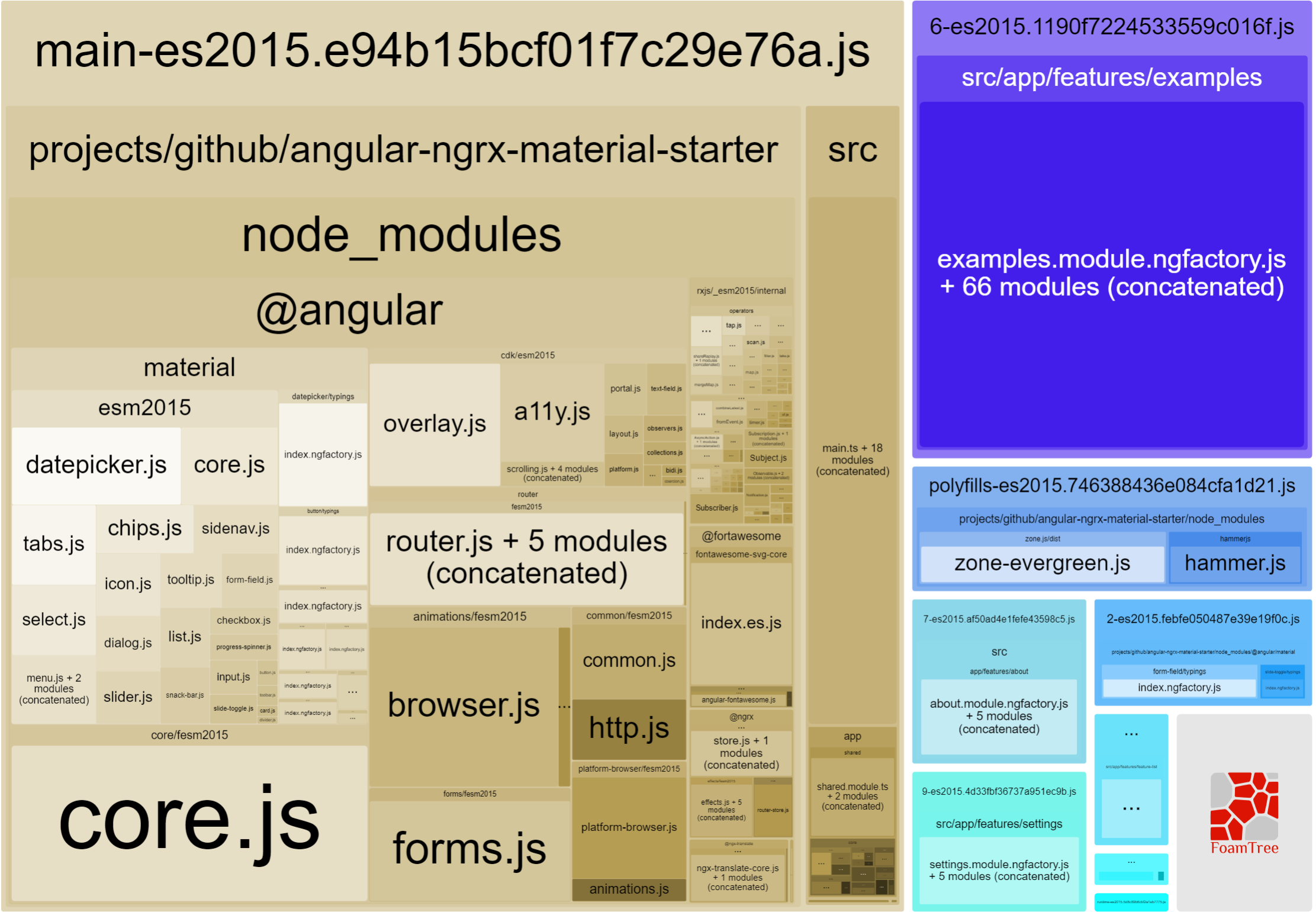by @tomastrajan
- Live Demo
- Getting Started
- Useful Commands
- Make It Your Own
- Goals
- Learning Materials
- List of Projects Built Using This Starter
- Features
- Stack
- Code of Conduct
- Contributors Guide
- Changelog ( get notified about the newest releases, follow Release Butler on Twitter )
git clone https://github.com/tomastrajan/angular-ngrx-material-starter.git new-project
cd new-project
npm install
npm startnpm start- starts a dev server and opens browser with running appnpm run test- runs lint and testsnpm run watch- runs tests in watch modenpm run cy:open- opens the Cypress Test Runner in interactive modenpm run cy:run- runs Cypress tests via the clinpm run prod- runs full prod build and serves prod bundlenpm run prettier- runs prettier to format whole code base (.tsand.scss)npm run analyze- runs full prod build andwebpack-bundle-analyzerto visualize how much code is shipped (dependencies & application)npm run compodoc- runs Compodoc to generate a static documentation of the application
docker build -t material-starter .- builds docker image with namematerial-starterdocker run -it \ -v ${PWD}:/usr/src/app \ -v /usr/src/app/node_modules \ -p 4200:4200 \ --rm \ material-starter- startsmaterial-startercontainer (you can access running application browsing http://localhost:4200)
When you are ready to serve your application the process has been made simple through the use of Production.Dockerfile and Production.docker-compose.yml.
From the root directory of the project simply run docker-compose -f Production.docker-compose.yml build. After this has run you can test your image locally by running docker-compose -f Production.docker-compose.yml up. Run docker-compose -f Production.docker-compose.yml down once you are done looking over the website so that docker cleans up all the resources related to it.
Npm scripts are also available to save having to write such a long command.
The following npm scripts correspond to the docker-compose commands.
| Npm Script | Docker Compose |
|---|---|
| docker:prod | docker-compose build |
| docker:prod-up | docker-compose up |
| docker:prod-down | docker-compose down |
When using this starter project to build your own app you might consider some of the following steps:
- use
search and replacefunctionality of your favourite IDE to replaceanmswith<your-app-prefix> - rename project in
package.jsonnameproperty and set appropriate version (eg0.0.0or1.0.0) - remove / rename context path config
-- --deploy-url /angular-ngrx-material-starter/ --base-href /angular-ngrx-material-starterinpackage.json, this is used to configure url (context path) on which the application will be available (eg.https://www.something.com/<context-path>/) - rename app in
src/environments/files (will be shown in browser tab) - delete pre-existing
CHANGELOG.md(you will generate your own with future releases of your features) - delete
CODE_OF_CONDUCT.md,CONTRIBUTING.mdandBUILT_WITH.mdfiles as they are relevant only if project is open sourced on Github - edit the title and Open Graph metadata properties in
index.html - remove or adjust links in the footer
- replace logo in
src/assetsfolder ( currently 128 x 128 pixelpngfile ) - adjust colors in
src/themes/default-theme.scss - create a pull request in the original repository to update
BUILT_WITH.mdfile with a link and short description of your project
Starter project is using Travis CI for running linters and tests on every commit. Based on your preferences and needs you can either:
- not use / use other CI server and delete both
.travis.ymland.travis-deploy.sh - create Travis CI account and link it to your projects Github repo and configure build
with
GH_REFandGH_TOKENenvironment variables for automatic deployment of releases to Github Pages
The main goal of this repository is to provide an up to date example of Angular application following all recent best practices in various areas like:
@ngrx/store- including reducers, actions, selectors@ngrx/effects- for implementation of side effects likehttprequests, logging, notifications,...@ngrx/entity- for CRUD operations@ngrx/router-store- to connect the Angular Router to @ngrx/store@ngrx/store-devtools- to enable a powerful time-travelling debugger.@angular/material- material design component library, theming, ...- routing
- testing of all the above mentioned concepts
- Angular CLI configuration (prod build, budgets, ...)
- end to end tests - a comparison between Protractor and Cypress
This repository will also strive to always stay in sync with releases of Angular and the related libraries. The nature of the repository is also a great match for first time open source contributors who can add simple features and enhance test coverage, all contributors are more than welcome!
Articles with content that explains various approaches used to build this starter project.
-
Blog post about Best subscribing to RxJS Observable data by Components: subscribe() vs | async pipe
-
Blog post about Best Practices for Angular CLI used in this starter project
-
Blog post about building responsive layouts with Bootstrap 4 in Angular apps
-
Blog post about unit testing of components with NgRx TestStore
- custom themes support (4 themes included)
- lazy-loading of feature modules
- lazy reducers
- localStorage ui state persistence
@ngrx/effectsfor API requests- fully responsive design
- angular-material and custom components in
SharedModule - Cypress for end to end tests
Production.Dockerfilefor quick and easy serving of your app
- Angular
- ngrx (or try ngx-model if you prefer less boilerplate)
- Angular Material
- Bootstrap 4 (only reset, utils and grids)
- Blocking at emitting LicenseWebpackPlugin when npm start - try using cnpm instead of npm
Want to start contributing to open source with Angular?
Leave your mark and join the growing team of contributors!
Get started by checking out list of open issues and reading Contributor Guide







